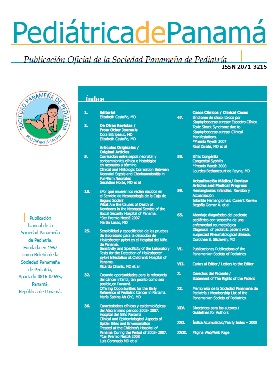1,
1,
1
Show Affiliation
Authors
DOI:
https://doi.org/10.37980/im.journal.rspp.20171667Abstract
Introduction: Infections associated with multiresistant germs are a public health problem. Knowledge of antibiotic prescribing practices allows the establishment of antibiotic optimization programs that improve the quality of care and decrease the rate of infections associated with resistant germs. Pneumonia, urinary tract infection and skin and soft tissue infections are among the main causes of admissions to pediatric hospital wards, therefore are key pathologies for antibiotic stewardship programs.Material and methods: We conducted an observational, descriptive, cross-sectional study for 3 months, involving patients with pneumonia, urinary tract infection and skin and soft tissue infections to determine the characteristics of antibiotic prescription in the hospitalization wards of the Hospital de Especialidades Pediátricas Omar Torrijos Herrera.Results and conclusions: 127 patients were elegible. 16.5% lacked criteria for hospitalization. The empiric antibiotic matched the guidelines in 78.7% of the cases. 100% of the patients received antibiotics prescribed normed doses and intervals. 66.1% fulfilled criteria for sequential therapy, this was performed in 7.9% of the cases. Infection recommendations were followed by the treating physician in 68.7% of the cases. We address the importance of establishing diagnostic and hospitalization criteria, as well as instituting antibiotic stewardship policies that include a scheduled therapy plan and step down therapy to improve the use of antibiotics.Downloads
Published
2021-06-21
Issue
Section
Artículos originales
License
Copyright (c) 2020 Pediatric Journal of PanamaDerechos autoriales y de reproducibilidad. La Revista Pediátrica de Panamá es un ente académico, sin fines de lucro, que forma parte de la Sociedad Panameña de Pediatría. Sus publicaciones son de tipo gratuito, para uso individual y académico. El autor, al publicar en la Revista otorga sus derechos permanente para que su contenido sea editado por la Sociedad y distribuido Infomedic International bajo la Licencia de uso de distribución. Las polítcas de distribución dependerán del tipo de envío seleccionado por el autor.






